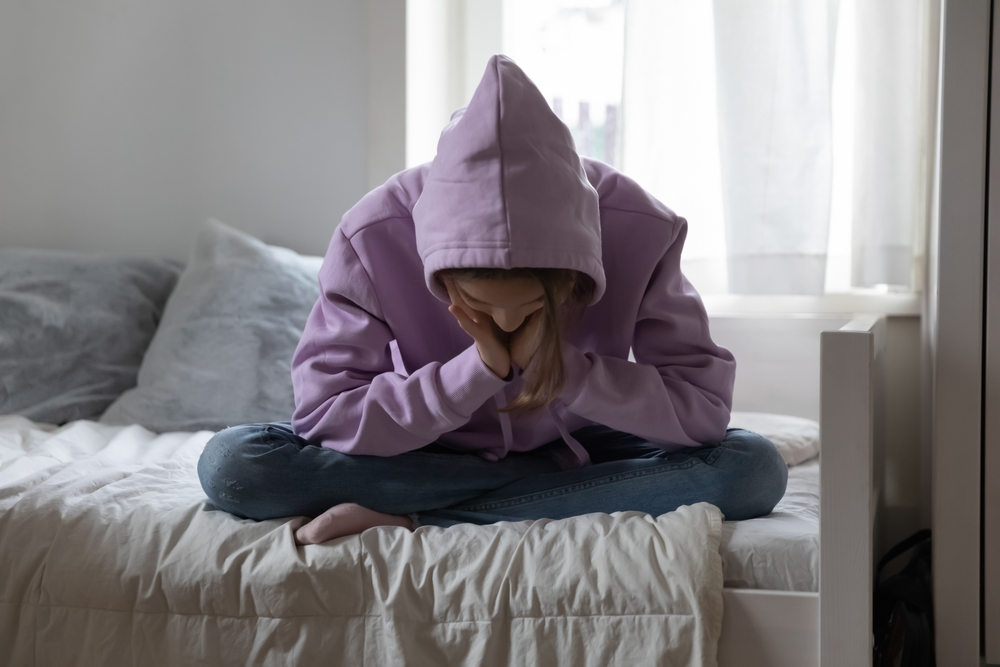“I hear a thousand kind words about me
And it makes no difference
Yet I hear one insult
And all confidence shatters.
-focusing on the negative”
–Rupi Kaur in her book of poems The Sun and Her Flowers.
In Rupi Kaur’s book of poems The Sun and Her Flowers, she centers mental health and young people’s experiences. That is why, like with the other poets mentioned in our series of articles on negative thinking patterns, she’s considered a popular Instagram poet.
In this short poem, Kaur helps her young readers identify the minimization and magnification negative thinking pattern. That is, minimizing the good and magnifying the bad. Likewise, in this article, you’ll learn more about this negative thought pattern and what you can do to help your teen.
While this article will help you understand your troubled teen who might be struggling with this thought pattern better, please don’t use this and other articles as a replacement for the therapy your teen needs. Getting your teen the help that they need, whether through individual counseling or for schools for troubled teens, is very important to their mental health.
Magnification and Minimization: “I can’t see what you see.”
Minimization and Magnification are types of cognitive distortions. A teen struggling with this negative thought pattern tends to emphasize the negatives while ignoring the positives. The chart below compares healthy thought patterns from negative thought patterns.
[su_table responsive=”yes”]
| Healthy Thought Patterns | Magnification and Minimization Thought Pattern |
|---|---|
| “I think that I’ll try out for the volleyball team. I didn’t get into the team last time, but the coach told me to try out for the team this year.” | “I don’t think that I’ll try out for the volleyball team. The Coach told me to try out for the team this year, but if I didn’t get in last year, so why would I waste my time again? I think that he was just trying to be nice anyway.” |
| “I’ve been doing really well in school this year! The pandemic was making me struggle with my mental health, but I pushed through.” | “I did well in school this year because of lockdowns this year. I bet I would have flunked otherwise.” |
[/su_table]
As you can see with the first example of healthy thought patterns, your teen is able to understand that:
-
Uncertainty can be an opportunity to approach things with curiosity or fear.
In the first example of healthy thought patterns, there’s an emphasis on trying things out even if they didn’t workout in the beginning. With the cognitive distortion, on the other hand, the brain and body is sent to a fight-or-flight mode. This leaves your teen unwilling to try new things.
-
Maximizing the Positive and Minimizing the Negative.
With the healthy thought pattern in the chart above, your teen is able to emphasize that the Coach told them to try out of the volleyball team again and sees that as a positive thing. With the cognitive distortion, your teen will only be able to think from the perspective of a skeptic by stating things like, “The Coach is just trying to be nice.”
The Harms of the Magnification and Minimization Cognitive Distortion
While there are many harms to the magnification and minimization thought pattern, here are two of the key issues found in the research on this thought pattern.
#1. Magnification and Minimization Are Associated with Anxiety and Depression.
As with other cognitive distortions, magnification and minimization are associated with anxiety and depression. That’s because of the rigidity of the negative thought patterns. As was mentioned in previous articles, with negative thoughts there are only absolutes while spectrums are forgotten or ignored. So for example, “Things will never get better,” or “I will always feel this way.”
With negative thoughts, there’s also an underlying emphasis on perfectionism. As we all know, the perfect person, situation, or thing doesn’t exist. Focusing on perfectionism can trigger or exacerbate mental illnesses like anxiety and depression.
#2. Magnification and Minimization Are Associated with Panic Attacks
Individuals or teenagers struggling with panic attacks often magnify their feeling of fear of experiencing another panic attack, while minimizing their ability to cope with panic attacks. So for example, your teen might choose to avoid situations that trigger panic attacks such as being in a crowded event while ignoring the times where they have been at events and didn’t experience panic attacks.
Tips To Help Your Teen WIth a Minimizing Cognitive Distortion
To help your teen with this cognitive distortion, here are some tips.
#1. Daily Time Allocated to Negative Thoughts
Instead of spending the entire day ruminating on negative thoughts, help your teen create structure in their lives by allocating time to think of all negative thoughts they’re having. For example, tell your teen something like, “Every day, I’ll give you 30 minutes to think of all the negative thoughts that you’re having. Once this 30 minutes ends, it’s time to do other things.”
Giving your teen time to ruminate on their thoughts helps them acknowledge these thoughts. It helps your teen quiet down their thoughts since these thoughts can’t simply be ignored. In addition to this, allocating time to negative thoughts helps your teen spend the rest of the day engaged in the present moment.
#2. Gratitude Journal
One way to help your teen learn to magnify the positive instead of the negative is by having a gratitude journal. Countless studies have shown that just writing down a few things each day that an individual is grateful for can improve mental and physical health. Gratitude helps us magnify the positives of each day, while minimizing the negatives.
Cognitive Distortions Should Be Taken Seriously
As this series of articles on negative thinking patterns comes to an end, it’s important to remember that cognitive distortions should be taken seriously. They can lead to angry outbursts, aggression, depression and anxiety, and many other mental health and behavioral issues. Getting help for your teen struggling with these cognitive distortions is very crucial to their wellbeing.





0 Comments